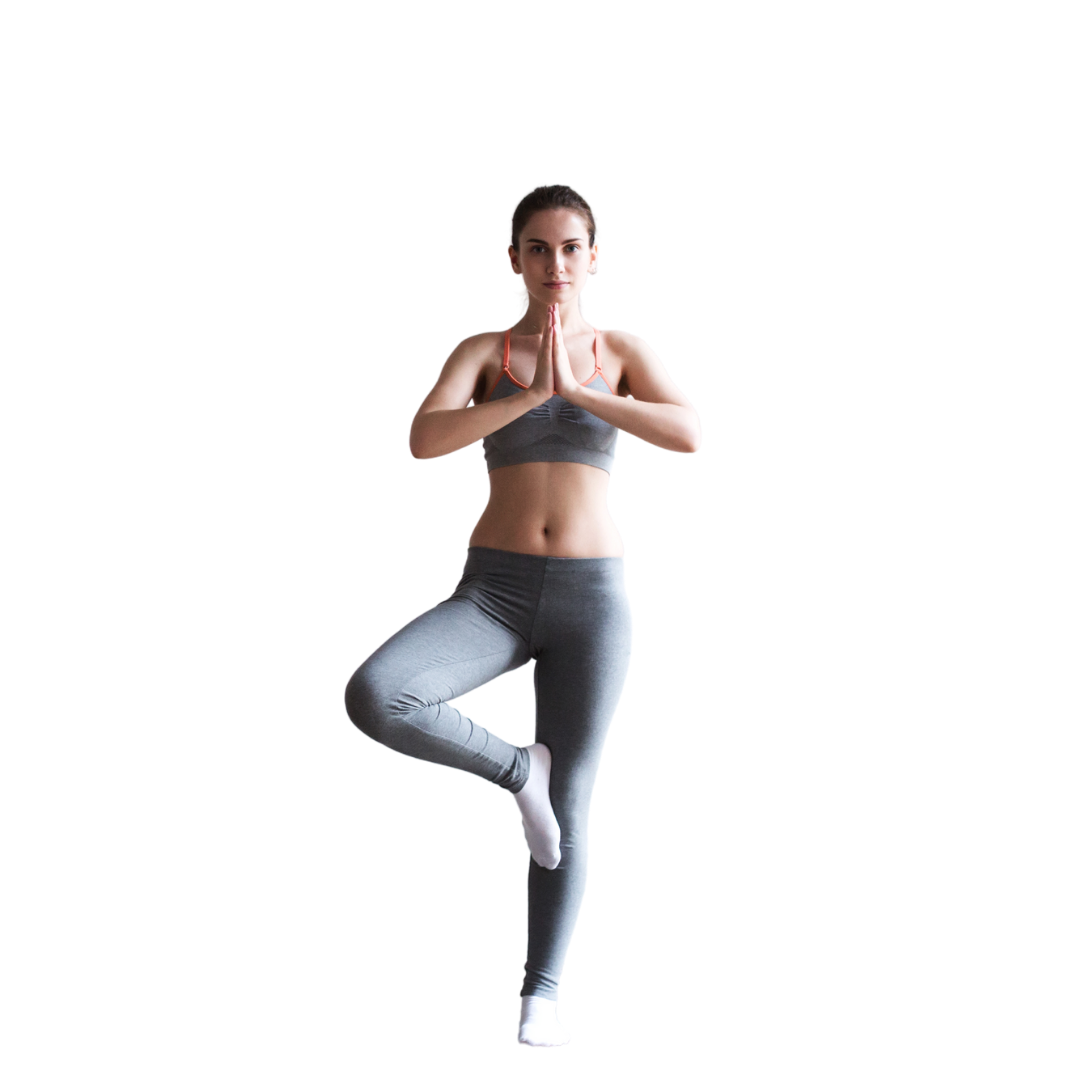Yoga to Lose Weight in 7 Days


It is the favorite word of today's generation. Everyone wants to indulge in fitness, with good stamina and figure. But, with weight loss comes dedication, motivation, and time management, which every one of us lacks in today's era.
In a world where sedentary lifestyles and unhealthy dietary habits prevail, the quest for effective weight loss solutions has become increasingly crucial. Among the myriad fitness regimens available, yoga stands out as a holistic approach that not only promotes physical well-being but also nurtures mental and emotional balance. In this comprehensive guide, we will delve into the transformative potential of yoga for weight loss, exploring various poses, breathing techniques, and mindfulness practices that will start bringing results in 7 days.
If we get into any exercise, be it yoga, walking, jogging, dancing, or going to the gym, we do not only have to focus on the physical realm. Instead, we also have to check on what we are eating, at what time, what we are speaking, what energies we are surrounded by, and the proportion we are eating. We have to check each and everything. In the coming section, I will take you through the points where we will get better clarity and ultimately reach the weight loss goal.
Understanding the mind-body connection in weight lossTo embark on a successful weight loss journey through yoga, it is essential to recognize the intricate connection between the mind and body. Yoga encourages a mindful approach to eating, helping individuals develop a healthier relationship with food. Mindful eating, combined with the physical benefits of yoga, creates a synergistic effect that fosters sustainable weight loss.
Table of content
The first thing to do is keep your Yoga mat ready.
Yoga, often underestimated as a weight loss tool, offers diverse poses that engage multiple muscle groups, enhance flexibility, and boost metabolism. Sun salutations, Warrior Poses, and Core Strengthening Asanas are integral components of a yoga practice geared toward weight loss.
Sun Salutation, also called Surya Namaskar
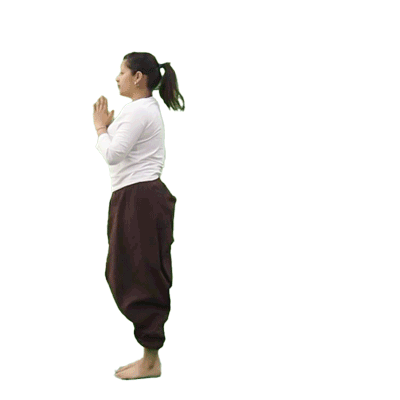
12 Steps to perform Surya Namaskar
1. Pranamasana (Prayer Pose):
• Stand at the front of your mat, feet together or slightly apart.
• Bring your palms together in front of your chest, in a prayer position.
• Sanskrit Mantra:(Om Mitraya Namah) - Salutation to the friend of all.
2. Hasta Uttanasana (Raised Arms Pose):
• Inhale deeply, raise your arms above your head, and arch your back slightly, looking up.
• Sanskrit Mantra:(Om Ravaye Namah) - Salutation to the shining one.
3. Hasta Padasana (Hand to Foot Pose):
• Exhale as you bend forward from the hips, keeping your spine straight.
• Bring your hands down to the floor beside your feet, if possible.
• Sanskrit Mantra:(Om Suryaya Namah) - Salutation to the dispeller of darkness.
4. Ashwa Sanchalanasana (Equestrian Pose):
• Inhale, step your right leg back into a lunge position, with your knee touching the floor.
• Keep your left knee bent at a 90-degree angle, and gaze forward.
• Sanskrit Mantra:(Om Bhanave Namah) - Salutation to the bestower of wisdom and cosmic illumination.
5. Dandasana (Stick Pose):
• As you exhale, step your left leg back to come into a plank position, aligning your body in a straight line.
• Sanskrit Mantra:(Om Khagaya Namah) - Salutation to the one who moves through the sky.
6. Ashtanga Namaskara (Salute with Eight Parts or Points):
• Lower your knees, chest, and chin to the floor, keeping your hips lifted.
• Your eight body parts touching the floor are your two hands, two feet, two knees, chest, and chin.
• Sanskrit Mantra:(Om Pushne Namah) - Salutation to the nourisher and provider of all.
7. Bhujangasana (Cobra Pose):
• Inhale, slide forward and upward, keeping your elbows bent, and lift your chest into a gentle backbend.
• Keep your shoulders relaxed and away from your ears.
• Sanskrit Mantra:(Om Hiranyagarbhaya Namah) - Salutation to the golden cosmic self.
8. Adho Mukha Svanasana (Downward Facing Dog Pose):
• Exhale, lift your hips and tailbone upward, pressing your heels down toward the floor.
• Keep your spine long and your head between your arms.
• Sanskrit Mantra:(Om Marichaye Namah) - Salutation to the lord of dawn.
9. Ashwa Sanchalanasana (Equestrian Pose):
• Inhale, step your right foot forward between your hands, aligning your knee over the ankle.
• Sanskrit Mantra:(Om Adityaya Namah) - Salutation to the son of Aditi, the cosmic mother.
10. Hasta Padasana (Hand to Foot Pose):
• Exhale, bring your left foot forward to meet your right foot, keeping your palms on the floor or legs.
• Sanskrit Mantra:(Om Savitre Namah) - Salutation to the dispeller of darkness.
11. Hasta Uttanasana (Raised Arms Pose):
• Inhale, sweep your arms out to the sides and up, coming into a gentle backbend.
• Sanskrit Mantra:(Om Arkaya Namah) - Salutation to the illuminating one.
12. Pranamasana (Prayer Pose):
• Exhale, bring your palms together in front of your chest, returning to the starting position.
• Sanskrit Mantra:(Om Bhaskaraya Namah) - Salutation to the bestower of wisdom and cosmic illumination.
Warrior Poses

There are 5 main warrior asanas:
Warrior I (Virabhadrasana I)
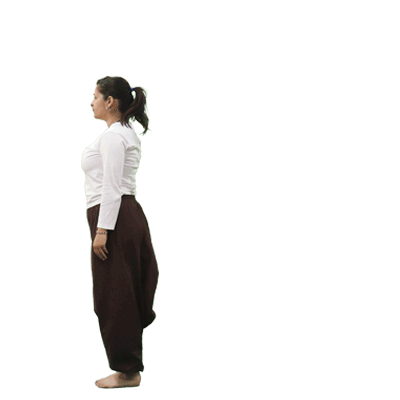
Step to perform:
Front knee bent and hips facing forward with arms up.Warrior II (Virabhadrasana II)
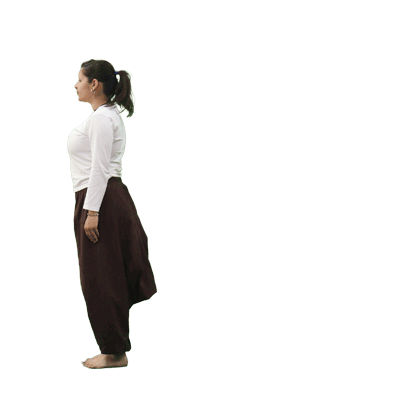
Step to perform:
The front knee is bent, and the pelvis is turned to the side to parallel the arms.Warrior III (Virabhadrasana III)
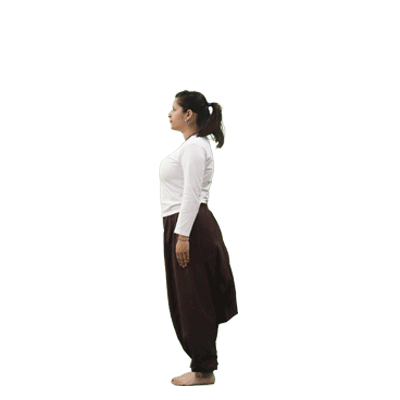
Step to perform:
In balance, the leg standing on one leg is straight, and the opposite leg is raised with hands forward.Humble Warrior (Baddha Virabhadrasana or Virabhadra Mudra)
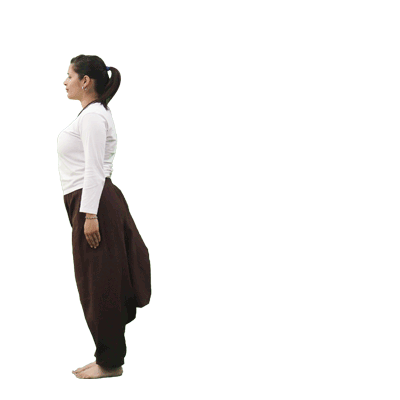
Step to perform:
The legs will be the same as in Warrior II. The only difference is that the body bends forward, and the arms are crossed behind the back.Reverse Warrior (Viparita Virabhadrasana)
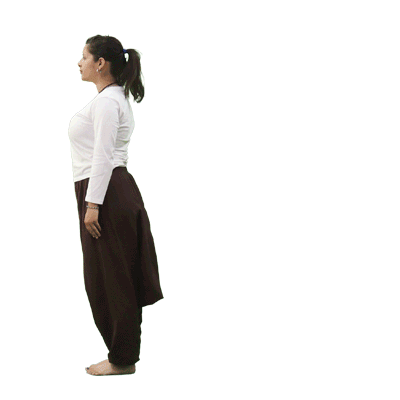
Step to perform:
The legs are the same as Warrior II, but the arms and torso extend towards the straight leg.Upward Bow Pose
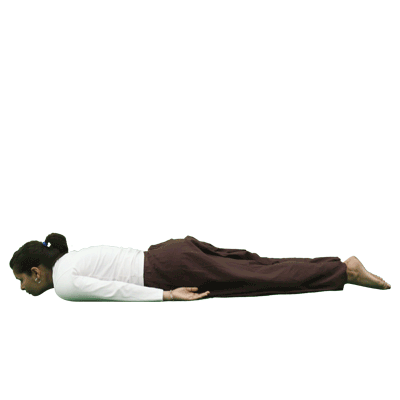
Sometimes called bicycle lunges, they energize by stretching the chest and lungs. Upward Bow also stimulates the Thyroid and pituitary glands and strengthens the arms, legs, and spine.
Step to perform:
• To perform this pose, a person must lie on your back, bend your knees, and bring them close to your body.• Place your hands on the mat next to your head, ensuring your fingers point to your shoulders and your elbows are up.
• Press your feet into the mat and inhale as you lift your tailbone and glutes. Make sure your thighs and inner legs are parallel.
• Press into your legs and arms and lift your head as you exhale. Press more deeply into your legs and arms, then lift your head completely off the floor until your arms are straight.
• Spread your shoulders and let your head relax. Hold the position for 5-10 seconds while breathing deeply.
• Slowly release from the position, curl your arms, and allow your tailbone and glutes to return to the mat.
Navasana
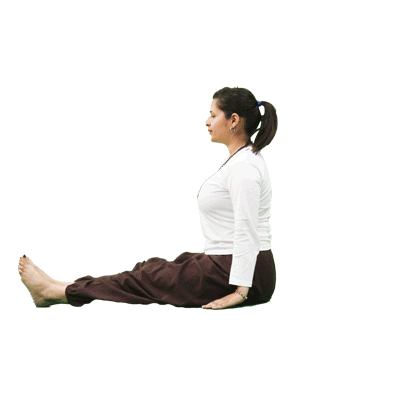
Step to perform:
• Sit on the floor with feet in front, knees slightly bent.• Place your hands on the mat, palms down, on either side of your feet.
• Slowly lean back, keeping your core strong, chin tucked in, and back straight.
• Lift your feet off the floor if possible, straightening your legs to form a V shape with your body.
• Raise your arms so that they are in line with your shoulders, palms facing each other, fingers extended.
• Take a deep breath (three to five counts).
• Slowly lower your arms and legs, hugging your legs and lowering your head before releasing.
Breathe control and weight management
Pranayama, or breath control, is a fundamental aspect of yoga beyond enhancing lung capacity. Specific breathing techniques in yoga can influence metabolism, reduce stress, and promote a sense of calm.
As stress is often linked to emotional eating and weight gain, incorporating pranayama into a weight loss journey provides a holistic approach to address both physical and mental aspects.
Yoga as a Stress-reduction Tool
Stress significantly contributes to weight gain, and yoga is a powerful stress-reduction tool. Yoga promotes the release of endorphins, the body's natural stress relievers.
Additionally, mindfulness meditation, a core component of yoga, cultivates self-awareness and helps individuals better manage stressors, reducing the likelihood of emotional eating.
Creating a Holistic Yoga Routine for Weight Loss
To maximize the weight loss benefits of yoga, it is crucial to design a well rounded and consistent practice. This section will guide readers in creating a personalized yoga routine that integrates various poses, breathing exercises, and meditation.
Emphasizing consistency, gradual progression, and listening to one's body, the guide empowers individuals to make yoga an integral part of their weight loss journey.
Diet Plan/ Lifestyle Changes/ Diet Prevention/ Weight loss diet:
Weight loss and gain revolves around calorie intake and expenditure. Simply put, you lose weight if you consume fewer calories than you expend, and you gain weight if you consume more calories than you lose.
So, make sure to include the balanced diet in your food, i.e, Proteins, carbohydrates, fats, minerals, vitamins.
Conclusion
With its multifaceted approach to health and well-being, yoga emerges as a potent ally in weight loss. By addressing physical and mental aspects, yoga provides a sustainable and holistic path to shedding excess pounds. As individuals embrace the transformative power of yoga, they not only witness changes in their bodies but also experience a profound shift in their overall lifestyle, fostering long-term health and vitality.
So go find your Yoga Instructor and achieve the healthy lifestyle.क्या आप योग में करियर बनाने को लेकर "Confuse" हैं?
Join Free Webinar By Maneesh Sir
- Know About Opportunities in the Growing Yoga Sector.
- Learn from a Yoga Teacher with Over 15 Years of Experience.
- Special Offer for Webinar Attendees.


